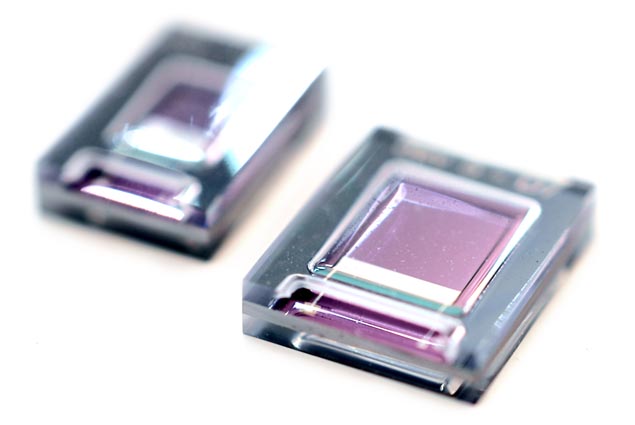Imec and Holst Centre announce that they have made a micromachined harvester for vibration energy with a record output power of 489µW. Measurements and simulation show that the harvester is also suited for shock-induced energy harvesting in car tires, where it could power built-in sensors. In a tire, at 70km/h, the new device can deliver a constant 42µW, which is enough to power a simple wireless sensor node. These results, obtained within the research centre’s program for Micropower Generation and Storage, are presented at the 2011 IEEE International Electron Devices Meeting (IEDM) in Washington (December 7-9).

Imec’s innovative harvester consists of a cantilever with a piezoelectric layer sandwiched between metallic electrodes, forming a capacitor. At the tip of the cantilever a mass is attached, which translates the macroscopic vibration into a vertical movement – putting strain on the piezoelectric layer and generating a voltage across the capacitor. As piezoelectric material, AlN (aluminum nitride) was chosen. The harvesters are packaged with a 6-inch wafer scale vacuum packaging process. The micromachining production process is compatible with low-cost mass-production fabrication.
The harvester has a record output power of 489µW when the vibrations closely match the MEMS’ resonance vibration, which in this case is 1011Hz. Together with an automotive partner, imec also validated the use of the harvester for use in car tires. These submit the harvester to regular shocks, depending on the car’s speed and the characteristics and condition of the tire. Each shock will displace the mass, after which it will start to ring down at its natural resonance frequency. During this ring-down period, which depends on the quality factor Q of the harvester, part of the mechanical energy is harvested. It is shown that in this way, a constant power output as high as 42µW can be harvested at a speed of 70km/h.
Micromachined vibration harvesters such as these are ideal devices to generate electricity from machines, engines and other industrial appliances which vibrate or undergo repetitive shocks. In these environments, they will power miniaturized autonomous sensor nodes, in situations where battery replacement is not sustainable or practical. Harvesters will allow sustainable monitoring on a massive scale. One example is Tire Pressure Monitoring Systems (TPMS) and its successors: a car tire with built-in sensors that monitor e.g. the tire integrity and pressure, the road condition, or the driving style.
About imec
Imec performs world-leading research in nanoelectronics. Imec leverages its scientific knowledge with the innovative power of its global partnerships in ICT, healthcare and energy. Imec delivers industry-relevant technology solutions. In a unique high-tech environment, its international top talent is committed to providing the building blocks for a better life in a sustainable society. Imec is headquartered in Leuven, Belgium, and has offices in Belgium, the Netherlands, Taiwan, US, China, India and Japan.
About Holst Centre
Holst Centre is an independent open-innovation R&D centre that develops generic technologies for Wireless Autonomous Transducer Solutions and for Systems-in-Foil. A key feature of Holst Centre is its partnership model with industry and academia around shared roadmaps and programs. It is this kind of cross-fertilization that enables Holst Centre to tune its scientific strategy to industrial needs.